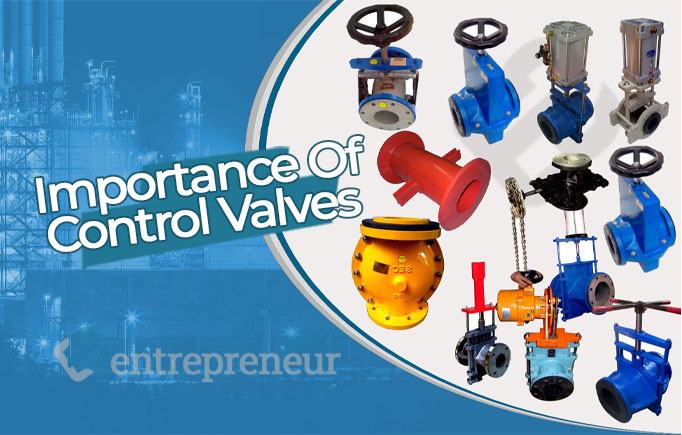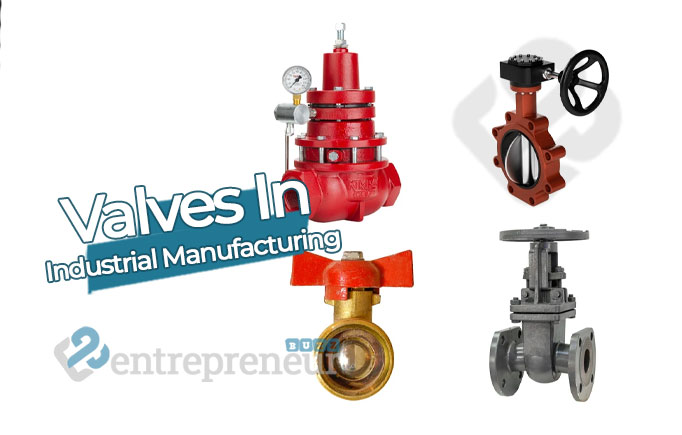Process efficiency is a critical factor in industrial manufacturing that directly impacts productivity, quality, and cost-effectiveness. One essential component in achieving optimal process efficiency is properly selecting and utilizing control valves. Control valves are crucial in regulating fluid flow, pressure, and temperature within manufacturing processes.
This article will explore the importance of control valves in industrial manufacturing, exploring their functions, types, and benefits.
The function of control valves
Control valves are the primary means of controlling and adjusting the flow of fluids within industrial manufacturing processes. These valves act as gatekeepers, allowing operators to modulate the flow rate, pressure, and temperature to maintain optimal process conditions. By precisely controlling these parameters, control valves help ensure that the manufacturing process operates within specified limits, achieving consistent product quality and production efficiency.
Control valves achieve their function through actuators, which respond to signals from process controllers and adjust the valve position accordingly. The actuator positions the valve’s internal components, such as the valve plug or ball, to control the flow rate or pressure. This dynamic control capability enables operators to fine-tune the process parameters in real-time, responding to changes in demand or process conditions.

Types of control valves
Control valves come in various types, each designed for specific applications and process requirements. The most common types include globe, butterfly, ball, and diaphragm valves.
Globe valves are widely used in industrial manufacturing due to their versatile design and precise control capabilities. They feature a linear motion disk that modulates the flow through an orifice, allowing for accurate flow control even at low flow rates.
On the other hand, Butterfly valves use a disc-shaped closure element that rotates to regulate the flow. These valves suit effective flow rates and offer cost-effective solutions in many applications.
A ball valve, known for quick operation and tight shut-off, utilizes a spherical disc with a bore to control the flow. They are commonly used in applications where on-off control is required. Diaphragm valves are primarily used in applications that require a high degree of control and cleanliness, such as pharmaceutical or food processing industries. They use a flexible diaphragm to regulate the flow, providing excellent sealing and preventing contamination.
Benefits of control valves in Industrial Manufacturing
Using control valves in industrial manufacturing brings many benefits that directly contribute to process efficiency and overall operational performance. One of the primary advantages is the ability to maintain precise control over process variables, such as flow rate, pressure, and temperature. This enables manufacturers to achieve consistency in product quality, ensuring that each batch meets the required specifications. Precise control allows also for optimized resource utilization, minimizing waste, and maximizing productivity.
Control valves also play a vital role in ensuring the safety of industrial manufacturing processes. By effectively regulating pressure and flow, these valves help prevent overpressurization, which can lead to equipment failure or even accidents. Control valves in hazardous environments or critical applications often have safety features like emergency shutdown mechanisms or fail-safe positions to safeguard against potential risks.
Control valves contribute to energy efficiency in industrial manufacturing. By controlling the flow rate and pressure, these valves enable manufacturers to minimize energy consumption, reducing operational costs and environmental impact. Modulating process parameters in real-time allows adjustments that match the actual demand, avoiding unnecessary energy usage.
The Future of control valves in industrial manufacturing
As industrial manufacturing continues to evolve, the role of control valves will become even more critical in ensuring process efficiency and sustainability. Future advancements in control valve technology are expected to focus on areas such as energy efficiency, predictive maintenance, and increased automation.
One area of interest is energy optimization. Control valves will be vital in optimizing energy consumption by utilizing advanced control strategies and integrating intelligent energy management systems. This includes features like demand-based control, energy recovery mechanisms, and adaptive control algorithms that dynamically adjust valve parameters based on energy requirements.
Predictive maintenance will also be a key focus as manufacturers seek to minimize downtime and optimize maintenance schedules. Control valves with advanced condition monitoring sensors and data analytics capabilities will enable predictive maintenance strategies. By analyzing real-time performance data, operators can identify potential issues, proactively plan maintenance activities, and reduce the risk of unexpected valve failures.
To that end
Control valves are essential in industrial manufacturing, providing precise and dynamic control over fluid flow, pressure, and temperature. Their function, combined with various valve types, enables operators to achieve optimal process efficiency, product quality, and safety.
By selecting the appropriate control valves for specific applications and utilizing their capabilities effectively, manufacturers can streamline their operations, reduce waste, enhance product consistency, and minimize energy consumption. The ongoing advancements in control valve technology continue to push the boundaries of process optimization, enabling industrial manufacturing to evolve toward increased efficiency and sustainability.

